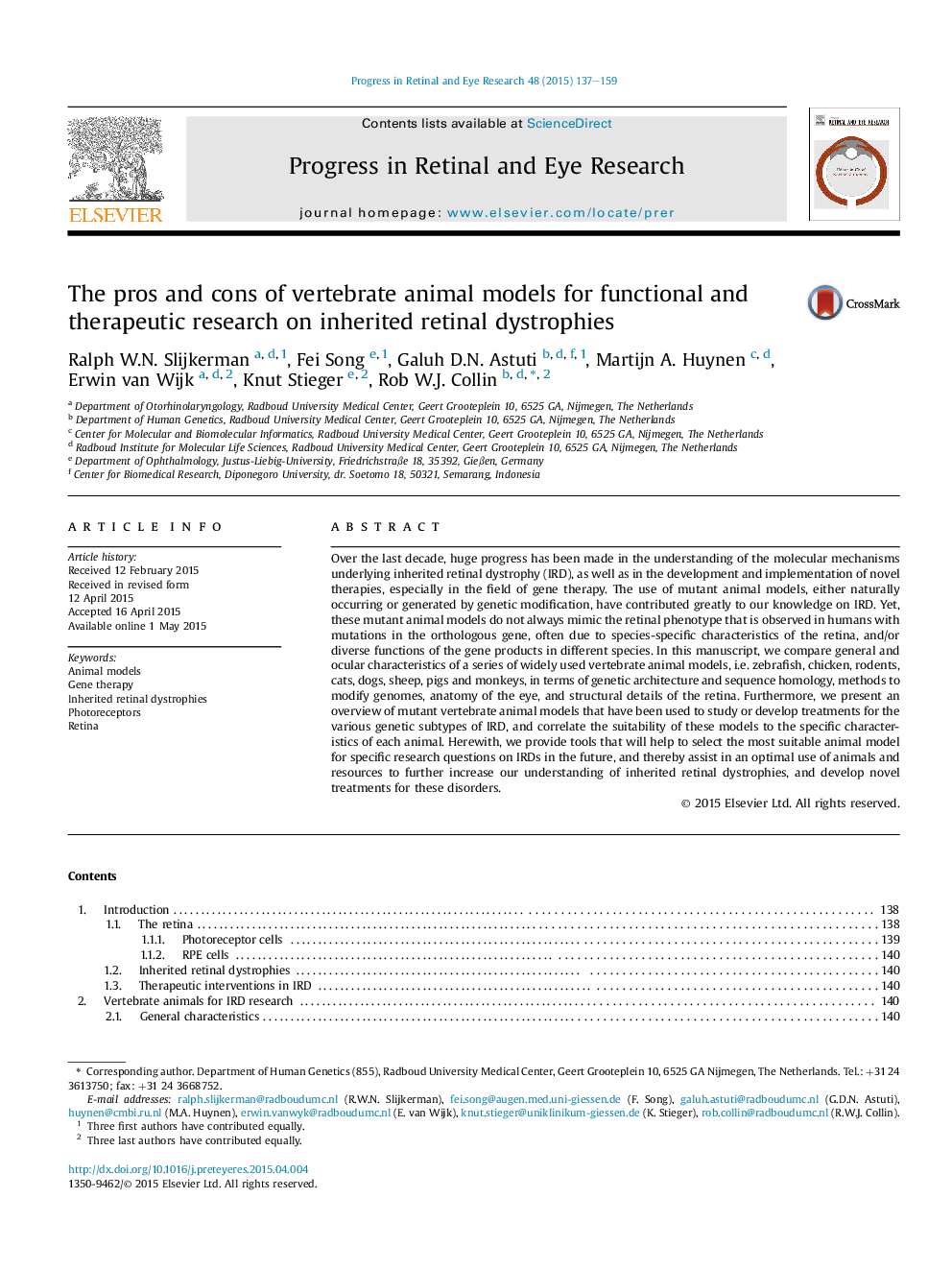| کد مقاله | کد نشریه | سال انتشار | مقاله انگلیسی | نسخه تمام متن |
|---|---|---|---|---|
| 6202725 | 1602818 | 2015 | 23 صفحه PDF | دانلود رایگان |
- Retinal morphology is similar among many vertebrate species, but important differences exist.
- Important IRD genes are missing or duplicated when compared between several species.
- Mutant animal models for IRD can be generated by forward or reverse genetic approaches.
- Lack of an IRD phenotype is associated with gene-based or morphological differences.
- Cross-species comparison of different animal assists to select suitable models for IRD research.
Over the last decade, huge progress has been made in the understanding of the molecular mechanisms underlying inherited retinal dystrophy (IRD), as well as in the development and implementation of novel therapies, especially in the field of gene therapy. The use of mutant animal models, either naturally occurring or generated by genetic modification, have contributed greatly to our knowledge on IRD. Yet, these mutant animal models do not always mimic the retinal phenotype that is observed in humans with mutations in the orthologous gene, often due to species-specific characteristics of the retina, and/or diverse functions of the gene products in different species. In this manuscript, we compare general and ocular characteristics of a series of widely used vertebrate animal models, i.e. zebrafish, chicken, rodents, cats, dogs, sheep, pigs and monkeys, in terms of genetic architecture and sequence homology, methods to modify genomes, anatomy of the eye, and structural details of the retina. Furthermore, we present an overview of mutant vertebrate animal models that have been used to study or develop treatments for the various genetic subtypes of IRD, and correlate the suitability of these models to the specific characteristics of each animal. Herewith, we provide tools that will help to select the most suitable animal model for specific research questions on IRDs in the future, and thereby assist in an optimal use of animals and resources to further increase our understanding of inherited retinal dystrophies, and develop novel treatments for these disorders.
Journal: Progress in Retinal and Eye Research - Volume 48, September 2015, Pages 137-159
